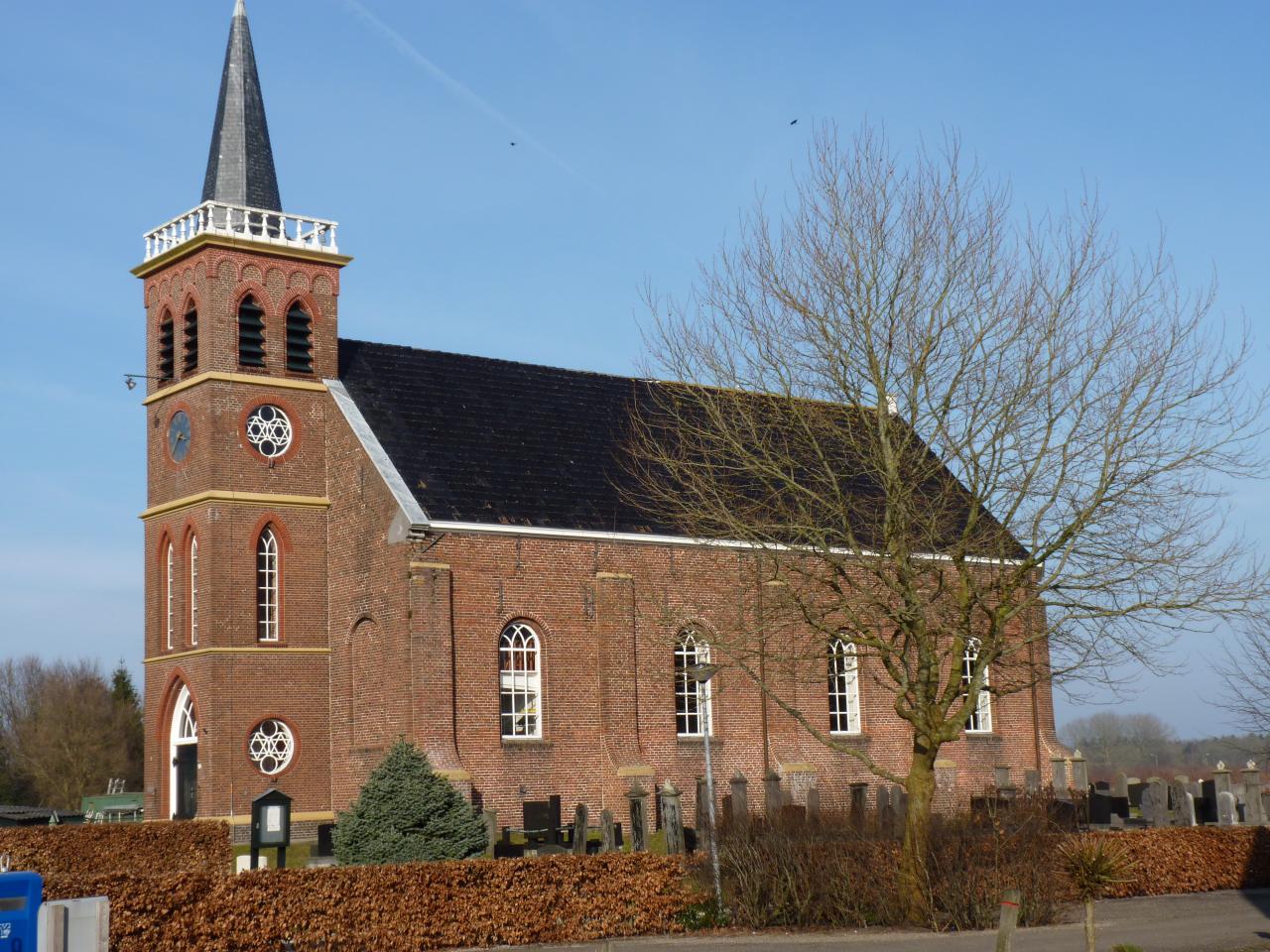Kropswolde

Documents have shown that there was already a church here in 1350. The current church is from 1778. After the demolition of the detached medieval tower in 1888, a new one was built against the church.
About this building
In the church is a beautiful pulpit with empire motifs from the 18th century, transferred from the broken church of Weiwerd.
The name Kropswolde comes from the estate of the Romanized Frisian Cruptorix. Via Crepeswolde this eventually becomes Kropswolde (crop: elevation in the landscape, wolde refers to the forests) Nowadays the church is used for wedding ceremonies and funeral services. In addition there are singing and music performances and various exhibitions. The church houses an organ that was built in 1969.


